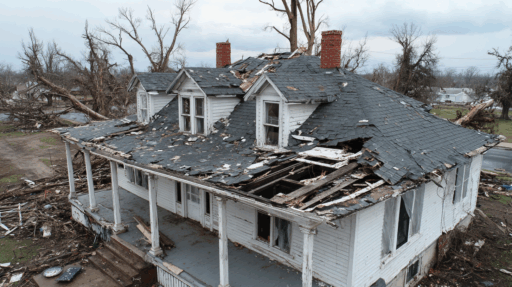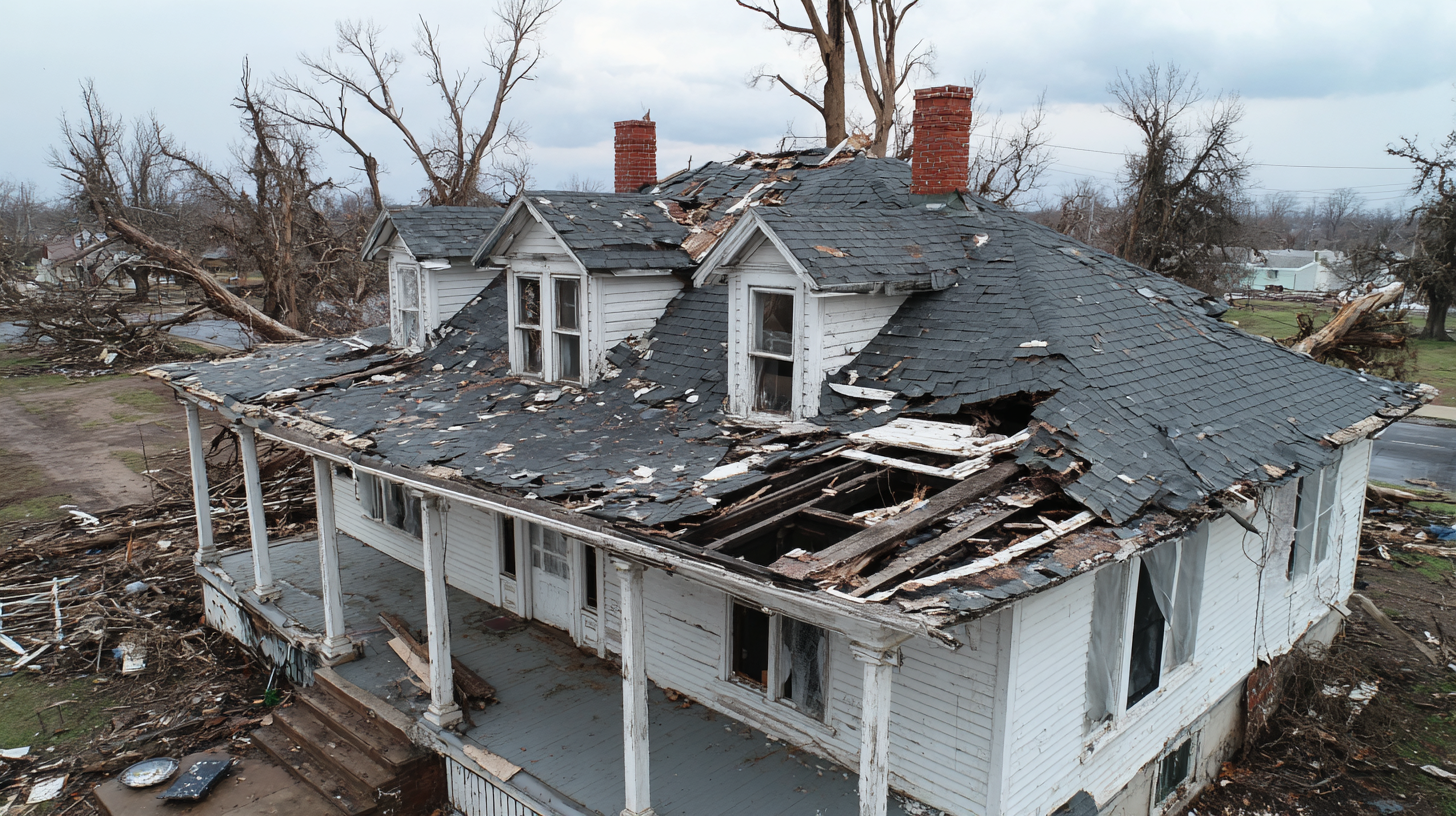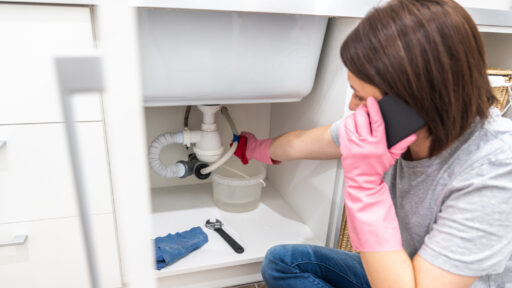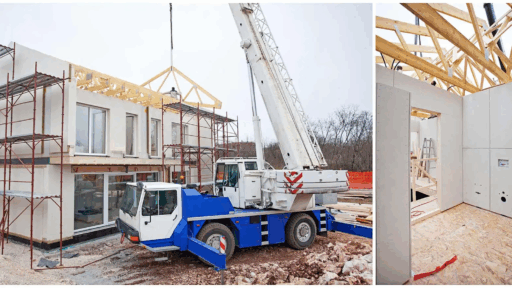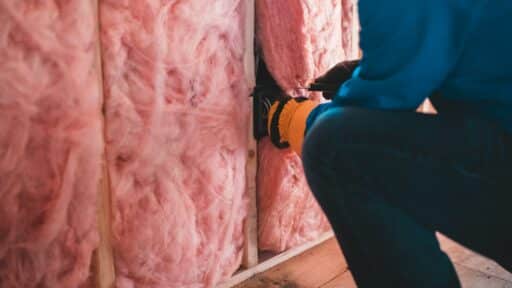Strong winds caught homeowners off guard last spring. One minute, everything was calm; the next morning, shingles were scattered across lawns like confetti.
Most people don’t notice the damage at first until water starts dripping inside during the next rainstorm. That’s when it becomes clear that the roof has taken the brunt of the wind damage.
There are proven ways to identify and prevent this damage before it worsens, and this guide shares exactly what works to protect your home and wallet.
In this blog, I’ll share my experience with it, its impact on my roof’s health, and what to do next.
What is Roof Wind Damage?
Roof wind damage is any harm caused to your roof’s structure, materials, or protective systems when strong winds hit your home.
Wind damage can range from minor issues, such as a few loose or missing shingles, to significant problems, including entire roof sections being torn away or structural damage to the underlying framework.
The damage often includes lifted, cracked, or completely missing shingles, damaged flashing around chimneys and vents, broken gutters, and punctures from flying debris.
While the wind itself causes some problems, much of the damage comes from objects that get picked up and thrown against your roof during storms, such as tree branches, outdoor furniture, or construction materials.
How to Know About the Damaged Roof?
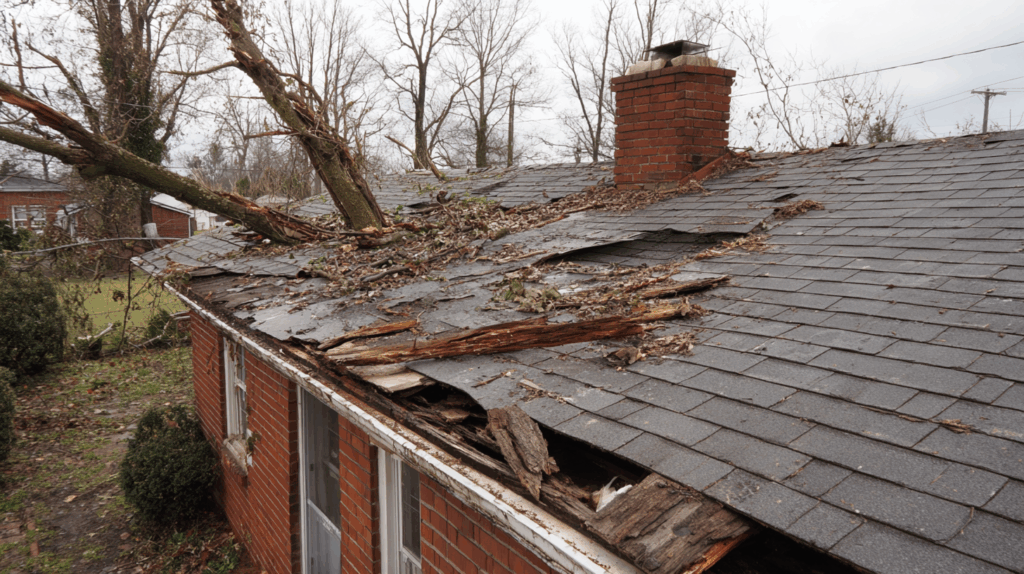
After my experience, I discovered that wind damage happens when strong gusts create uplift forces that pull or remove roofing materials.
The edges and corners of my roof faced the most significant risk, as winds slipped beneath my shingles and pulled them loose. Once the wind got under one small section, the damage quickly spread to larger areas.
During that spring storm, tree branches and debris struck my roof with tremendous force, cracking some tiles and creating holes in my shingles.
Even those small punctures allowed water inside, which started causing rot and expensive interior damage to my home. The areas around my vents, chimneys, and skylights proved especially vulnerable – they were weak points in my roof’s protection that I’d never considered before.
Identifying the Warning Signs of Roof Wind Damage
After my costly lesson, I learned to recognize roof wind damage early to avoid expensive repairs. Here are the seven warning signs to watch for:
Missing or Loose Shingles – Empty patches on the roof and shingles that move when touched show where wind has pulled them away from their secure position.
Curling or Lifting Shingles – When shingle edges curl upward and lift away from the roof surface, it’s clear evidence that wind has gotten underneath and loosened them.
Granule Loss – Excessive granules collecting in gutters and downspouts means wind is wearing away the shingles’ protective coating.
Damaged Flashing – Bent, cracked, and loose metal strips around chimneys and vents show where wind has caused movement and impact damage.
Water Leaks or Stains – New ceiling stains and wall discoloration may reveal wind-created roof openings that are not visible from the outside.
Storm Debris on Roof – Tree branches and leaves left on the roof after storms can hide punctures and damage underneath that are easy to miss.
Sagging or Structural Issues – Visible drooping or uneven roof lines indicate severe structural damage that requires immediate professional attention.
The Hidden Costs of Ignoring Minor Roof Damage
Minor roof wind damage might seem insignificant, but it can quickly snowball into major problems that cost thousands of dollars and threaten your family’s safety.
Understanding these hidden consequences helps homeowners make informed decisions about addressing roof issues promptly.
| Problem Type | Initial Cost | If Ignored | Final Impact |
|---|---|---|---|
| Single Loose Shingle | $50 repair | Water seeps in, rots wood | $2,800 major repair |
| Small Water Gap | Minor seal fix | Mold growth in the attic | Health risks, ceiling damage |
| Delayed Storm Repair | Covered by insurance | Months of additional damage | Claim denial, out-of-pocket costs |
| Visible Roof Damage | Prompt professional repair | Buyer negotiations | $15,000 reduction in home value |
This table clearly illustrates how minor roofing problems can quickly compound when left untreated.
Taking immediate action on minor wind damage protects your family’s health, preserves your home’s value, and prevents manageable repairs from becoming financial disasters that drain your savings and disrupt your life.
Know what your community has to say about the minor roof wind damage; check out the thread by r/Roofing “Minor wind damage; advice?“.
When Does Wind Become Dangerous for Your Roof?
The amount of damage depends on several factors, including the age, condition, and materials used in your roof. Older roofs with loose or weathered shingles are particularly vulnerable and can lose pieces even in moderate winds.
Here’s what typically happens at different wind speeds:
- 20-30 mph: You’ll notice large tree branches swaying back and forth, but your roof should be fine.
- 30-40 mph: Whole trees start moving noticeably. This is when loose or damaged shingles may begin to lift or fly off.
- 40-45 mph: Small branches and twigs start breaking off trees. These can hit your roof and cause minor damage, such as cracked or dented shingles.
- 45-55 mph: Larger branches break and fall. This is serious territory where you could see significant roof damage from falling debris or direct wind impact.
- 55-65+ mph: Expect moderate to heavy damage. Even healthy roofs can start losing shingles, and tree damage becomes a significant concern.
- 70+ mph and beyond: This is severe storm territory where significant structural damage occurs to both roofs and surrounding trees.
How Does Wind Damage Insurance Claims Work
Understanding your insurance coverage before wind damage to your roof strikes can save you thousands of dollars and prevent claim disputes.
Here’s what every homeowner should know about wind damage policies and associated costs.
| Insurance Factor | What You Need to Know | Typical Costs |
|---|---|---|
| Policy Coverage | Most policies cover wind damage with $100K-$500 dwelling protection | Varies by policy value |
| Deductibles | Standard: $500-$2,500, 1-5% of home value | $500-$15,000 |
| Exclusions | Some exclude hurricanes/tornadoes May need a separate windstorm policy | $300-$2,000/year |
| Documentation | Professional photos protect your claim | $200-$500 |
| Emergency Repairs | Temporary fixes like tarping | $200-$1,500 |
| Claim Reporting | Must file within 24-48 hours | Free (delays cost thousands) |
| Public Adjuster | For complex claims over $10K | 10-15% of the settlement |
| Immediate Expenses | Out-of-pocket before reimbursement | $1,000-$3,000 |
Being prepared with proper documentation, understanding your deductible, and acting promptly can mean the difference between a smooth claim process and thousands of dollars in unexpected expenses.
What to Do When You Suspect Wind Damage to Your Roof?
If you think wind damaged your roof, follow these four essential steps:
Step 1: Call a professional roofer: Contact a licensed roofer immediately for an Inspection. They’ll assess damage, provide repair estimates, and help with insurance claims. Always verify their insurance and ask for references before hiring.
Step 2: Document everything: Take clear photos of all damage from multiple angles. Note dents, missing shingles, debris, and leaks. Create a written list of problems found. This documentation protects you during insurance evaluations.
Step 3: File your insurance claim: Contact your insurance company within 24-48 hours. Provide photos and damage details. An adjuster will inspect and determine coverage amounts. Your documentation helps ensure fair compensation.
Step 4: Schedule repairs promptly: Once financing is arranged, schedule repairs promptly to prevent further damage. For severe damage, request emergency tarping until permanent repairs begin. Choose reputable contractors who offer a guarantee for their work.
To Conclude
Wind damage to the roof is a serious threat that can catch any homeowner off guard, but it doesn’t have to result in a financial disaster or ongoing headaches.
By learning to recognize the warning signs early, from missing shingles to water stains, you can address problems before they escalate into expensive repairs.
Taking proactive steps, such as regular inspections, upgrading to wind-resistant materials, and maintaining proper insurance coverage, creates multiple layers of protection for your most valuable investment.

